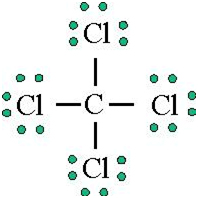 What is Carbon tetrachloride?
What is Carbon tetrachloride?
Carbon Tetrachloride is a clear, colorless, volatile and very stable chlorinated hydrocarbon.
Uses
Carbon tetrachloride was produced in large quantities to make refrigerants and propellants for aerosol cans, as a solvent for oils, fats, lacquers, varnishes, rubber waxes, and resins, and as a grain fumigant and a dry cleaning agent. Consumer and fumigant uses have been discontinued and only industrial uses remain.
Sources and Potential Exposure
Carbon tetrachloride may be found in both ambient outdoor and indoor air. The primary effects of carbon tetrachloride in humans are on the liver, kidneys, and central nervous system (CNS). Human symptoms of acute (short-term) inhalation and oral exposures to carbon tetrachloride include headache, weakness, lethargy, nausea, and vomiting. Acute exposures to higher levels and chronic (long-term) inhalation or oral exposure to carbon tetrachloride produces liver and kidney damage in humans. Human data on the carcinogenic effects of carbon tetrachloride are limited. Studies in animals have shown that ingestion of carbon tetrachloride increases the risk of liver cancer. Individuals may be exposed to carbon tetrachloride in the air from accidental releases from production and uses, and from its disposal in landfills where it may evaporate into the air or leach into groundwater. Carbon tetrachloride is also a common contaminant of indoor air; the sources of exposure appear to be building materials or products, such as cleaning agents, used in the home. Workers directly involved in the manufacture or use of carbon tetrachloride are most likely to have significant exposures to carbon tetrachloride. Individuals may also be exposed to carbon tetrachloride by drinking contaminated water.
Federal Regulations
EPA has classified carbon tetrachloride as a Group B2, probable human carcinogen.

 Americas
Americas Europe
Europe Français
Français Deutsch
Deutsch Italiano
Italiano Español
Español
